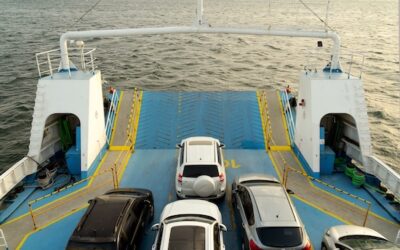Confused over car seats? We know it can feel a little overwhelming – especially if you have more than one child to consider! Find out what car seats you need and when your child is ready to sit in the front seat of your car.
When Can Children Sit in the Front Seat?
At what age is it legal for children to stop riding in child seats and start sitting in the front seat of your car?
UK law is clear on this issue: Children must use a car seat until they’re 12 years old or 135cm tall, whichever comes first.
After this, they must wear a seatbelt. And until they’re 14, it’s your legal responsibility to ensure that all children in your car buckle up.
And that goes for your whole car, front and back seats!
There are some exceptions to the rule, though. Children can travel without a car seat when:
- Riding in a taxi, minicab, minibus, coach or van
- The journey is unexpected, or an emergency
- There’s no room for another car seat
In every case, children are only allowed to use adult seat belts if they’re over 3. And the law usually specifies that children are only allowed to ride travel without a car seat so long as they sit in the rear.
So as you can see, UK law is pretty strict here. Even in emergency situations, it’s still illegal for most children to ride in the front without a child seat. But why?
Why Can’t Children Sit in the Front Seat of a Car Without a Child Seat?
Seatbelts and airbags are designed to keep adults safe. Babies and children are not simply smaller versions of adults. In many ways, they’re still developing. They have bigger heads, smaller limbs, their major organs are in different places and they’re overall more vulnerable to injury than adults.
So while a seatbelt and an airbag can save your life, they can kill a baby or child.
Seatbelts are designed to spread the force of a crash against your strongest areas – the pelvic bone and the ribcage. Children under 3 are usually so small that seat belts won’t be properly positioned over their shoulders and pelvis.
But car seats are specifically designed to protect a child’s most vulnerable areas at every stage of their development.
Ignore these rules and you won’t just be endangering your child’s life. You’ll also face a £100 fixed penalty notice if you’re caught.
So What Sort of Car Seat Do I Need?
Choose your car seat based on your child’s age, height, and weight.
Babies and very young children should always travel rear facing in an infant child carrier. This will give them better head and neck protection, and as they’ll be lying flat, there’s no risk of their heads flopping forward when they fall asleep.
For slightly older children, you’ll need a high-backed booster seat and, from around age 7, a backless booster cushion.
There’s various car seat groups and ages out there to make choosing the right seat easier. But what’s really important is your child’s weight and height.
For more information about front and rear-facing seats, and for a detailed guide on which seat to get for your child, read our guide to child car seat safety.
Child car seats can be pricey, so it’s worth thinking about insurance. Get insured with Go Girl and we will pay towards the cost of a replacement seat after an accident, even if it doesn’t appear to be damaged. For more information, take a look at the policy wording.



